 May 14, 2015 John E. Ross, KD8IDJ, Editor
| ||||||
Amateur Radio Parity Act of 2015: 55 Cosponsors -- and Climbing The Amateur Radio Parity Act of 2015 -- also known as H.R.1301 -- has attracted 55 cosponsors as of May 14. The bill, introduced earlier this year in the US House by Rep Adam Kinzinger (R-IL), would direct the FCC to extend its rules relating to reasonable accommodation of Amateur Service communications to private land-use restrictions. This weekend's Dayton Hamvention will offer an opportunity for ARRL to "The ARRL will collect these signed letters and have them hand-delivered to the various Congressional offices by our DC legislative action team," Henderson explained. "This easy-to-use process has succeeded at several major hamfests already this year and helped generate several hundred letters." Henderson said that the typically high number of attendees at Dayton Hamvention presents an excellent opportunity for Amateur Radio operators to get involved in the H.R. 1301 grassroots legislative effort. The latest lawmakers to sign aboard H.R. 1301 include Representatives Pete Olson of Texas, Ed Perlmutter of Colorado, John Shimkus of Illinois, Dr Brad Wenstrup of Ohio, and Roger Williams of Texas. Henderson said the League is also working on securing an original sponsor and co-sponsor for a companion Amateur Radio Parity Act bill in the US Senate. He encouraged all who may not be attending Hamvention to visit the ARRL's H.R. 1301 page, where they can download a letter that can be personalized for your member of Congress. "Once you have printed and signed the letter, send it to ARRL Grassroots Letter program, 225 Main St, Newington CT 06111," Henderson said. "Once received, these will be sorted and sent to the ARRL DC team for hand delivery on Capitol Hill." "We have gotten off to a good start on H.R. 1301, but we have a long way to go," Henderson said. "We need every ARRL member to get involved with this important fight." ARRL Will Mark 100 Years of QST at Hamvention® The ARRL will join 20,000 or more of its closest friends this week, as the Amateur Radio world turns its attention to Dayton Hamvention® 2015, Friday through Sunday, May 15-17. Hamvention is the world's largest Amateur Radio gathering. As it has for the past several years, ARRL will showcase its products and activities at the ARRL EXPO in the Hara Arena Ballarena. This year, the League will celebrate the centenary of its membership journal, QST.
The League will conduct several forums during Hamvention weekend. On Friday, 2:30 until 3:45 PM in Room 2, the League will present "Ham Radio and the Law: Getting Antennas Up and Keeping Them Up," moderated by ARRL Regulatory Information Manager Dan Henderson, N1ND. Discussion will focus on legal issues of interest to hams, including how to avoid or work around restrictive covenants, presenting your case for a tower permit, and the latest court rulings on PRB-1 and towers. Henderson will also provide an update on The Amateur Radio Parity Act of 2015 -- H.R.1301. The League's membership forum will take place on Saturday, 9:15-11 AM, in Room 5. ARRL Great Lakes Division Director Dale Williams, WA8EFK, will moderate.
The "doctor" will make a house call this year for the "The Doctor is In" forum on Saturday, noon until 1 PM, in Room 3. Joel Hallas, W1ZR, will field questions from visitors. Hallas edits the popular "The Doctor is In" question-and-answer column in QST. NASA Astronaut Mike Fincke, KE5AIT, will be the guest of honor at a meet-and-greet opportunity on Saturday, 1:45 until 3 PM, in Room 5. Fincke was part of the International Space Station expedition 9 and 18 crews and, through the Amateur Radio on the International Space Station (ARISS) program, he was among the more active radio amateurs to serve on the station. In June 2004, he delighted many radio amateurs by taking part in ARRL Field Day from the ISS. Icom America will live stream the Youth Forum at Hamvention, May 16, 9:15 until 12:15 PM EDT, which Fincke will attend. Carole Perry, WB2MGP, will moderate. Read more. Oklahoma Amateur Radio Volunteers Rally as Severe Weather Strikes As storms swept into Central Oklahoma on May 6, radio amateurs -- in their role as SKYWARN storm spotters -- became active, confirming observations and reporting the effects of the damaging weather. Oklahoma Section Emergency Coordinator Mark Conklin, N7XYO, reports that the Grady County bedroom community of Bridge Creek -- some 30 miles south-southwest of Oklahoma City -- took a direct hit, and ham radio volunteers have been on the job ever since, providing needed communication. Tornado victims have only been able to assess property damage in the past few days, and residents are now working to clean up. The storm destroyed many homes, and a volunteer center has been set up at the local elementary school.
In addition to causing structural damage, the dangerous storms also took out portions of the power grid. The Bridge Creek Volunteer Fire Department was among those losing power, and a back-up generator failed. Matt Garcia, N5PTV, arrived with a generator and got the department's repeater and base station gear up and running again, so that firefighters were able to respond to calls, Conklin said. Mike Rockey, KE5EQC, vice president of the Aeronautical Center Amateur Radio Club, alerted Conklin that the Southern Baptist Convention Disaster Relief had requested Amateur Radio assistance to help support the Bridge Creek communications effort. Conklin sent word out to all ARES-OK-registered radio operators to help fill this communications need. "Amateur Radio operators are volunteering in Bridge Creek to assist with communications efforts," an Oklahoma Department of Emergency Management May 13 update noted. "Operators have worked to support communication between Oklahoma Baptist Disaster Relief's chain saw and debris teams. The communication support is especially useful since cell service in the area has often been unreliable due to the storms. The Amateur Radio volunteers are expected to continue to assist through the weekend." Read more. -- Thanks to Mark Conklin, N7XYO, Oklahoma Section Emergency Coordinator Amateur Radio Nets Are Crucial Link in Maritime Rescues Amateur Radio played a crucial role in two recent at-sea rescues. On April 8, sailors Randy (VA3ORT) and Dawn (VA3PBT) Ortiz of Ontario, Canada, ran into heavy seas that led them to abandon their 42-foot sailing yacht Nirvana Now in a remote portion of the South Pacific while en route to the Marquesas. The Ortizes were able to summon help via the Pacific Seafarer's Net on 14.300 MHz, and the North Carolina-based Continuum, skippered by Bob Jankowski, KJ4ZFP, and his wife Mona, were able to come to their rescue, some 1200 miles from the nearest landfall. The Ortizes were last reported to be safe in Tahiti. Pacific Seafarer's Net member Fred Moore, W3ZU, in Florida, was able to coordinate the request for help.
On April 16, members of the Maritime Mobile Service Network (MMSN) assisted with a mayday call on 14.300 MHz, which NCS William Sturridge, KI4MMZ, handled. Skipper Andrew Fleming, KC4VOA, on board the sailing yacht Seaquel, reported his vessel taking on water due to a mechanical failure some 95 miles northwest of Puerto Rico, and headed to Florida. Fleming reported that he had been unable to raise the US Coast Guard or other agencies on the radio. Sturridge notified the Coast Guard and also contacted Moore to assist in handling the crisis. "They had a short window of opportunity in which to communicate," Assistant MMSN Net Manager Jeff Savasta, KB4JKL, reported. "It was only approximately 5 minutes before contact was lost with the vessel, and any other information that they obtained was via an in-house database program which the MMSN utilizes for its contacts. KC4VOA has checked in to the MMSN many times prior, so there was a vast amount of information on the vessel." The US Coast Guard was dispatched, the vessel was located, and a Coast Guard Paramedic was lowered via helicopter to treat a head injury that Fleming had sustained. Fleming and his wife Sally, KA3RUJ, later expressed their gratitude to Sturridge. "I had worried lately that ham radio might be overtaken by technology, but you proved that it still has a significant place," Andrew Fleming said. Read more. -- Thanks to John Procter, W1HFG, and Bobby Graves, KB5HAV New ARRL General Class License Manual Available as Softcover, Spiral Bound, or E-Book The new ARRL General Class License Manual (8th edition) is now available in softcover, spiral-bound, and e-book versions. The optional academic-style spiral-bound edition (ARRL Item No 1904, retail $32.95) lies flat, making it more convenient for both students and instructors. It includes everything you need to prepare for the 35-question General class Amateur Radio license exam, so you won't have any surprises on test day.
The ARRL General Class License Manual is also available in traditional softcover format (ARRL Item No 8119, retail $29.95). Both spiral-bound and softcover editions are available from the ARRL Store or from your ARRL Publications Dealer, or call 860-594-0355 or toll-free in the US 888-277-5289 to order. In addition to the hard-copy manuals, ARRL has just released a digital edition of The ARRL General Class License Manual in Kindle format from Amazon. As the leading publisher of Amateur Radio licensing and training materials, ARRL is expanding beyond traditional printed books to meet the increasing demand from readers who prefer digital publications. The ARRL also offers Kindle editions of The ARRL Ham Radio License Manual and its question-and-answer study guides, ARRL's Tech Q&A, ARRL's General Q&A, and ARRL's Extra Q&A. US Navy-Marine Corps MARS Program to End The US Department of Defense is phasing out the US Navy-Marine Corps Military Auxiliary Radio System (MARS) program. Its operational mission will transition to the other MARS service branches by the end of September. MARS volunteers are Amateur Radio operators who provide auxiliary or emergency communications to local, national, and international emergency and safety organizations, as an adjunct to normal communications.
The announcement encouraged current Navy-Marine Corps MARS members and clubs to submit applications to the US Army MARS or US Air Force MARS programs as soon as possible. "The US Navy greatly appreciates the thousands of MARS volunteers, past and present, who have been integral to the success of MARS," the announcement concluded. An individual very familiar with the MARS program said the change was not unexpected and came to a head as the US Strategic Command embraced Army MARS as the lead branch for contingency communication and Air Force MARS began partnering with the US Army program on the operations side. "The Army and Air Force MARS branches have an obvious role in providing contingency communications for the 50 states," said the individual, who preferred not to be identified by name. "Members are everywhere 'on the ground,' and experience in Afghanistan and Iraq has proven the tactical usefulness of HF on land. There was no similar role for the landlocked membership of Navy-Marine Corps MARS." He said the MARS program can use all the volunteers it can attract. Read more. New Nepal Earthquake Keeps Amateur Radio Relief Effort Going Amateur Radio relief activity in Nepal had begun to wind down before a magnitude 7.3 earthquake shook parts of the Himalayan nation on May 12, collapsing buildings and killing dozens in a region that's still trying to recover from the much stronger earthquake on April 25. The latest quake revived the ham radio effort. Centered some 50 miles east-northeast of the Nepalese capital of Kathmandu and near the border with Tibet, the temblor was felt in India and Bangladesh. The US Geological Survey considers the May 12 tremor as an aftershock of the magnitude 7.8 earthquake on April 25.
Bhide said he learned that some multi-story structures that had suffered cracks in the initial earthquake collapsed, killing several people.He said on May 14 that people were returning home from temporary shelters. He continues to receive missing person inquiries from abroad. About 300 people are still missing in Langtang Valley. Bhide said he would continue monitoring 14.210 MHz. The Computer Association of Nepal-USA (CAN-USA) project "Radio Mala" reported that equipment it deployed in 2013 continues to function in the aftermath of the latest tremor. Radio Mala team member Rick Santina, W6IFA, said that Sanjeeb Panday, 9N1SP, had e-mailed the CAN-USA team that the HF station was still working. Panday has installed the antenna for the second CAN-USA UHF/VHF repeater, but the installation was not able to be completed before this week's aftershock. "We are still deploying ham radio equipment to Nepal in response to this humanitarian crisis," said CAN-USA Disaster Preparedness Committee Chairman Suresh Ojha, W6KTM. Colorado ARES Volunteers Support Grueling Race Pikes Peak Amateur Radio Emergency Service (PP ARES) volunteers provided communication support on May 2 for the 2015 Falcon 50 Ultra-Marathon. Competitors in the "military-heavy" 50-mile event carry 35-pound rucksacks while wearing boots and uniforms, said Pikes Peak ARES PIO John Bloodgood, KD0SFY. He said 170 runners tested their mettle on the rugged terrain and high altitude of the marathon course at the United States Air Force Academy in Colorado Springs.
Bloodgood said this meant having everything up and running before the race start time of 6 AM and operating through the 8 PM finish line cut-off time. "Using radios in areas where cell phones often have spotty reception and the same techniques that make ham radio a huge asset in disasters, the ARES operators passed runner progress messages, tracking each bib number as it passed through an aid station," he explained. The ARES volunteers used Fldigi in MT63 2000L mode, with Flmsg sending Incident Command System Form 213 messages over UHF FM radios. "This digital system is exactly the same as hams might use to support incident commands during disasters and emergencies," Bloodgood said. Messages were automatically compiled into the Bib Track software developed by Al Glock, KC0PRM, that was originally designed to track patients during a mass casualty event. "This software can even predict when a runner should arrive at the next aid station," Bloodgood added. More than 1070 runner position reports were passed. The hams also used voice modes and APRS. Bloodgood said the Falcon 50 gives Pikes Peak ARES members a valuable opportunity to hone their skills in preparation for emergencies and disasters. Pikes Peak ARES has supported the event every year from its start 4 years ago. Read more. -- Thanks to Pikes Peak ARES PIO John Bloodgood, KD0SFY Brian Moran, N9ADG, Named as New Editor of The ARRL Contest Update Brian Moran, N9ADG, will take over as editor of The ARRL Contest Update, starting with the May 20 issue. Current editor Ward Silver, N0AX, is stepping away after 13 years as the radiosport newsletter's editor in order to concentrate on other ARRL projects. Moran, who lives in Kirkland, Washington, has been in Amateur Radio for more than 35 years.
"My vision for the Contest Update is to continue to provide the timely event-specific information and other technical or operating information relevant to the interests of traditional contesters," he said, "and explore ways to continue informing and broadening the readership, considering the evolving nature of the hobby." Moran got his ham ticket in the late 1970s, while in high school. His interest in electronics and radio led him to pursue a degree in computer science, and then a career in software development -- "while ham radio was on pause," he said. Moran became consistently active again in 1999, after he joined the Western Washington DX Club. In addition to DXing and contesting, he enjoys restoring and building equipment. Other radio amateurs in his household include his wife Caroline, KA7MOM, and children Emma, KE7MAM, and Sam, KE7MAN. An e-newsletter, The ARRL Contest Update publishes every other Wednesday, 26 times a year. Read more. US Naval Academy CubeSat Launch to Include Next APRS Satellite Sometime on or about May 20, the next US Naval Academy satellites and Brno University PSK31 transponders head into space from Cape Canaveral on an Atlas 5 launcher and into an approximately 50° orbit. The launch will include the Psat APRS satellite -- a pair of identical 1.5 U cubesats (A and B) -- as well as the BRICsat and USS Langley (Unix Space Server Langley) nanosatellites.
"We welcome radio amateurs worldwide to tune into the downlinks and either IGate packets into the global APRS-IS system or to e-mail me," Bruninga said. "After launch, the next several orbits will be over USA and Europe." Bruninga said Psat, including the PSK31 transponder, would not be available for use until all on-orbit checks are complete, a process he said could take "many, many days." He also requested reports on any PSK31 (FM) heard on 435.350 MHz (the PSK31 uplink is 28.120 MHz). The PSK31 multi-user FDMA transponder experiment on Psat, BRICsat, and USS Langley is similar to the one on RAFT and PCSAT2.
BRICsat will carry a PSK31 transponder with a 28.120 MHz uplink (2.5 kHz bandwidth) and a UHF FM downlink on 435.350 MHz. Gunter's Space Page describes USS Langley as "a proof-of-concept mission for providing global Internet access via a nanosatellite constellation." Bruninga said satellite experiments such as Psat "serve our educational and outreach goals for student projects encouraging young people to be interested in science, technology, engineering, and math." He said he hopes other schools will build either additional 145.825 MHz relay satellites or experimental sensors. "We hope that Psat will be the 'egg' in this chicken-egg conundrum," he added. Read more. In Brief...
The K7RA Solar Update Tad Cook, K7RA, Seattle, reports: This week our quiet sun came to life, and now the visible solar disc is crowded with sunspots. On May 11, the daily sunspot number rose to 188, the highest number since January 30, when it was 193. We have to go back to November 17, 2013, to find a higher sunspot number. It was 282 on that day, which was way over on the other side of the Cycle 24 peak, which happened in early 2014.
On May 12, the Australian Space Forecast Centre warned of "increased geomagnetic activity" on May 13, due to a high-speed coronal hole wind stream. The prediction was correct, and the planetary A index for May 13 was 45, while the college A index reached 63. The predicted planetary A index is 25, 12, and 8 for May 14-16, then 5, 15, and 12 on May 17-19, then 5 on May 20-28, 8 on May 29-30, 5 on May 31, then 8, 15, and 10 on June 1-3, 5 on June 4-6, 12 on June 7, 25 on June 8-9, and 12 and 8 on June 10-11. Predicted solar flux is 155 on May 14, 150 on May 15-16, then 145, 135, and 125 on May 17-19, 120 on May 20-21, 115 on May 22-23, 110 on May 24-27, 115 on May 28, and 120 on May 29-31. In Friday's bulletin look for reports from readers and an updated forecast. Send me your reports and observations. Just Ahead in Radiosport
Upcoming ARRL Section, State, and Division Conventions and Events
Find conventions and hamfests in your area.
. . .
Subscribe to...
Free of charge to ARRL members...
| ||||||
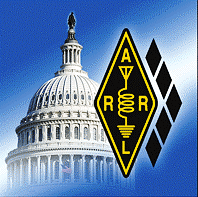 meet with individual radio amateurs and encourage them to seek their House member's support. ARRL Regulatory Information and Legislative Action Manager Dan Henderson, N1ND, said those stopping by his booth at ARRL EXPO, can -- in about a minute -- have a letter, addressed to their representative and personalized with their contact information, printed and ready to sign.
meet with individual radio amateurs and encourage them to seek their House member's support. ARRL Regulatory Information and Legislative Action Manager Dan Henderson, N1ND, said those stopping by his booth at ARRL EXPO, can -- in about a minute -- have a letter, addressed to their representative and personalized with their contact information, printed and ready to sign.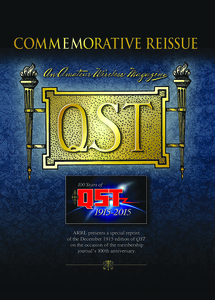 "To help celebrate 100 years of QST, ARRL will introduce a commemorative reissue of the first QST -- the December 1915 issue -- during Dayton Hamvention®," said ARRL Marketing Manager Bob Inderbitzen, NQ1R. "The special reprint is free when you join, renew, or extend your ARRL membership at ARRL EXPO." Inderbitzen said ARRL Life Members may obtain a free copy just by stopping in at the ARRL EXPO store. Those unable to attend Hamvention may obtain copies directly from ARRL for $9.95 each.
"To help celebrate 100 years of QST, ARRL will introduce a commemorative reissue of the first QST -- the December 1915 issue -- during Dayton Hamvention®," said ARRL Marketing Manager Bob Inderbitzen, NQ1R. "The special reprint is free when you join, renew, or extend your ARRL membership at ARRL EXPO." Inderbitzen said ARRL Life Members may obtain a free copy just by stopping in at the ARRL EXPO store. Those unable to attend Hamvention may obtain copies directly from ARRL for $9.95 each.

 "I would like to impress upon all that it was the communications allowed us through the SSB radio giving us access to the land-based ham networks and other boats that saved our lives," Randy Ortiz
"I would like to impress upon all that it was the communications allowed us through the SSB radio giving us access to the land-based ham networks and other boats that saved our lives," Randy Ortiz  The exam questions and answer key are built from the latest General class question pool, which goes into effect on July 1, 2015. You can use the General Class License Manual in conjunction with ARRL's online
The exam questions and answer key are built from the latest General class question pool, which goes into effect on July 1, 2015. You can use the General Class License Manual in conjunction with ARRL's online 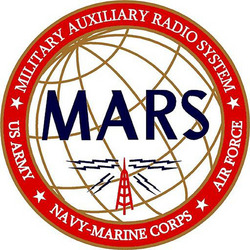 "The intent of the transition is to best align the program to support national mission requirements," the announcement said. Chris Jensen of Naval Computer and Telecommunications Area Master Station Atlantic (NCTAMS LANT) told ARRL that the Navy no longer has any service-specific requirements for Navy-Marine Corps MARS and is working within DoD to transition the program into Army and Air Force MARS by September 30.
"The intent of the transition is to best align the program to support national mission requirements," the announcement said. Chris Jensen of Naval Computer and Telecommunications Area Master Station Atlantic (NCTAMS LANT) told ARRL that the Navy no longer has any service-specific requirements for Navy-Marine Corps MARS and is working within DoD to transition the program into Army and Air Force MARS by September 30.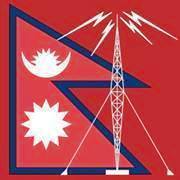 "Immediately after the first tremor, I turned on my station and gave a call on 14.210 MHz," said Amateur Radio Society of India (ARSI) National Disaster Communication Coordinator Jayu Bhide, VU2JAU. He subsequently made contact with Satish Kharel, 9N1AA, who reported that power as well as Internet and cell phone service were out, although text messaging was still possible. 9N1AA was operating from battery power at the time, but later got his power back. Other parts of Kathmandu are still without electricity, however.
"Immediately after the first tremor, I turned on my station and gave a call on 14.210 MHz," said Amateur Radio Society of India (ARSI) National Disaster Communication Coordinator Jayu Bhide, VU2JAU. He subsequently made contact with Satish Kharel, 9N1AA, who reported that power as well as Internet and cell phone service were out, although text messaging was still possible. 9N1AA was operating from battery power at the time, but later got his power back. Other parts of Kathmandu are still without electricity, however.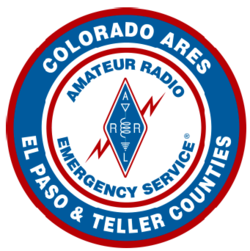 "They were not alone," he said. "Supporting them was a volunteer team of Amateur Radio operators from the Pikes Peak District Amateur Radio Emergency Service. Twenty-two operators, one of whom was also a participant in the marathon, set up six stations around the course to track and report runner progress, coordinate supplies and transportation, and report any emergencies on the course."
"They were not alone," he said. "Supporting them was a volunteer team of Amateur Radio operators from the Pikes Peak District Amateur Radio Emergency Service. Twenty-two operators, one of whom was also a participant in the marathon, set up six stations around the course to track and report runner progress, coordinate supplies and transportation, and report any emergencies on the course."
.jpg) "Psat is a Naval Academy student satellite project named in honor of one of our graduates, Bradford Parkinson, of GPS fame, which contains an APRS transponder for relaying remote telemetry, sensor, and user data from remote users and Amateur Radio environmental experiments or other data sources back to Amateur Radio experimenters via a global network of Internet-linked ground stations," explained APRS developer Bob Bruninga, WB4APR. In addition to the data transponder, a secondary
"Psat is a Naval Academy student satellite project named in honor of one of our graduates, Bradford Parkinson, of GPS fame, which contains an APRS transponder for relaying remote telemetry, sensor, and user data from remote users and Amateur Radio environmental experiments or other data sources back to Amateur Radio experimenters via a global network of Internet-linked ground stations," explained APRS developer Bob Bruninga, WB4APR. In addition to the data transponder, a secondary 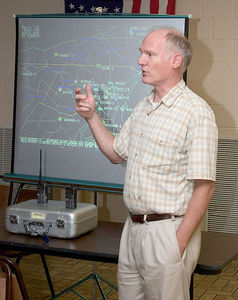
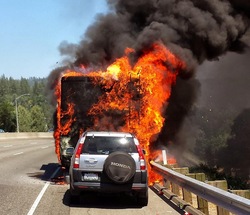 Ham Radio to the Rescue: Jeff Allbright, N5JEF, on May 3 reported a vehicle fire in an RV towing an SUV. He was able to alert emergency services. "The location was eastbound I-80 in Auburn, California," Allbright said. "The people from the RV had tried and failed to reach 911 on their cell phone. I also tried, and, although cell phone service was working, I too got an 'unable to connect' message." Allbright was able to contact Jim Griffith, KI6AZH, on the W6EK 2 meter repeater and confirm that he was calling emergency services. Firefighters responded, but Albright said he believes both vehicles were destroyed. -- Thanks to ARRL Sacramento Valley SM Ron Murdock, W6KJ [Jeff Allbright, N5JEF, photo]
Ham Radio to the Rescue: Jeff Allbright, N5JEF, on May 3 reported a vehicle fire in an RV towing an SUV. He was able to alert emergency services. "The location was eastbound I-80 in Auburn, California," Allbright said. "The people from the RV had tried and failed to reach 911 on their cell phone. I also tried, and, although cell phone service was working, I too got an 'unable to connect' message." Allbright was able to contact Jim Griffith, KI6AZH, on the W6EK 2 meter repeater and confirm that he was calling emergency services. Firefighters responded, but Albright said he believes both vehicles were destroyed. -- Thanks to ARRL Sacramento Valley SM Ron Murdock, W6KJ [Jeff Allbright, N5JEF, photo]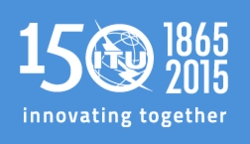 4U1ITU to Mark ITU's 150th Anniversary: Members of the International Amateur Radio Club 4U1ITU in Geneva will celebrate the 150th anniversary of the International Telecommunication Union (
4U1ITU to Mark ITU's 150th Anniversary: Members of the International Amateur Radio Club 4U1ITU in Geneva will celebrate the 150th anniversary of the International Telecommunication Union (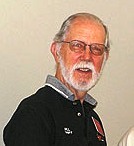 Past New Mexico SM Bill Weatherford, KM5FT, SK: Former ARRL New Mexico Section Manager William O. "Bill" Weatherford, KM5FT, of Albuquerque, died April 5. He was 78. Weatherford, a retired US Foreign Service communications officer, was New Mexico SM from 2003 until 2007 and was an Assistant SM from 2001 until 2003. Weatherford spent 35 years with the US Department of State, serving in 10 countries in Europe, Asia, the Middle East, Africa, and South America. First licensed as a Novice in the early 1950s, Weatherford returned to ham radio in 1965 and operated from several of his overseas postings. He retired in 1995. Weatherford was a US Air Force Veteran. Survivors include his wife, Judith. The family has invited memorial donations to
Past New Mexico SM Bill Weatherford, KM5FT, SK: Former ARRL New Mexico Section Manager William O. "Bill" Weatherford, KM5FT, of Albuquerque, died April 5. He was 78. Weatherford, a retired US Foreign Service communications officer, was New Mexico SM from 2003 until 2007 and was an Assistant SM from 2001 until 2003. Weatherford spent 35 years with the US Department of State, serving in 10 countries in Europe, Asia, the Middle East, Africa, and South America. First licensed as a Novice in the early 1950s, Weatherford returned to ham radio in 1965 and operated from several of his overseas postings. He retired in 1995. Weatherford was a US Air Force Veteran. Survivors include his wife, Judith. The family has invited memorial donations to  ARRL 2014 Phone Sweepstakes Results Posted: The complete
ARRL 2014 Phone Sweepstakes Results Posted: The complete 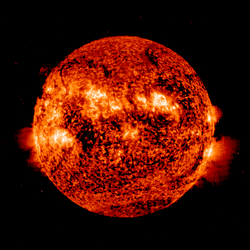 The average daily sunspot number increased 86 points from the previous week to 146.9 for the May 7-13 period, and the average daily solar flux rose from 115.4 to 156.3.
The average daily sunspot number increased 86 points from the previous week to 146.9 for the May 7-13 period, and the average daily solar flux rose from 115.4 to 156.3.







